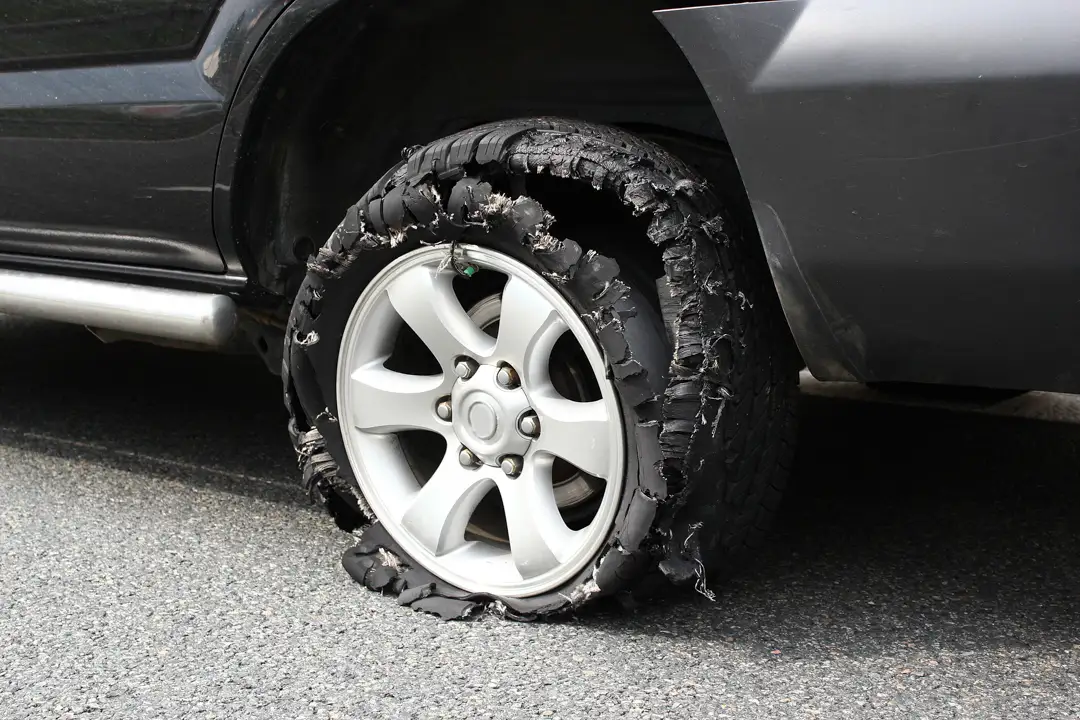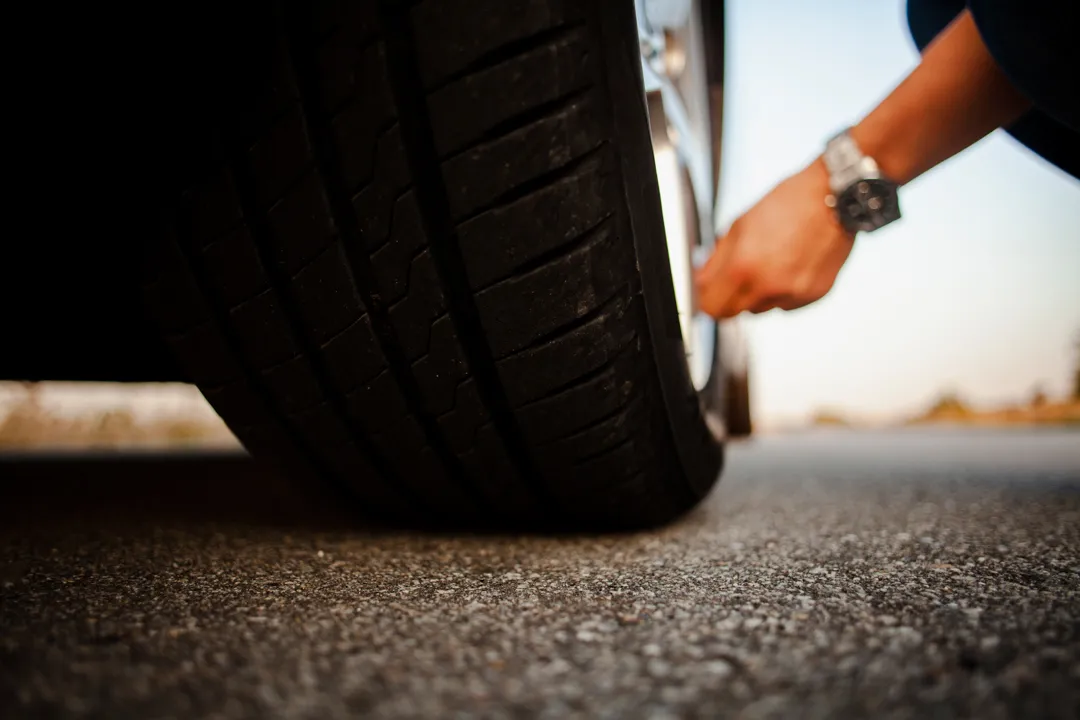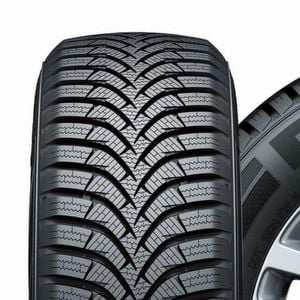Last Updated on 24.12.2024 by hrushetskyy
Tire Blowout Statistics & Safety Tips
Tire blowouts are a significant cause of road accidents worldwide. As terrible as it sounds, a sudden loss of air pressure in a tire can cause a sudden loss of life. Therefore, neglecting tire maintenance can lead to an increased risk of a fatal accident. Please don’t forget to take your car to a mechanic for a checkup, and stay safe on the road.
We hope the statistics will help you understand how important timely tire care is. Let’s explore the numbers and see what you, as a conscious driver, can do to prevent an accident.
This article has three parts: Part I is dedicated to the statistics themselves, Part II is dedicated to tire blowout causes, and Part III provides the essential guidelines for blowout prevention.
Official data is released the year after the analysis, so at this moment, we can only provide statistics for 2022 and preliminary data for 2023. Fortunately, we see a good tendency: the number of road accidents across the States reduces yearly. So, hopefully, we see a better picture in 2024 and the years to come
What is a tire blowout?
A tire blowout is a sudden loss of air pressure in a tire, causing its rapid deflation. The danger of a blowout is the unexpected loss of control of a vehicle—often a cause of serious car accidents. Blowouts can be caused by improper air pressure, punctures, cuts, cracks, excessive wear, manufacturing defects, overloads, and road hazards.
to the National Highway Traffic Safety Administration, improper air pressure, punctures, and road hazards are among the leading causes of tire blowouts, a significant safety concern on the nation’s highways.
Tire blowout statistics , general insights
According to the National Highway Traffic Safety Administration (NHTSA), 11,000 tire-related crashes happen in the United States annually. 563 fatalities resulted in 2022 alone.
The NHTSA also reports that tire blowouts are more likely to occur on highways and interstates, where vehicles travel at higher speeds.
But there’s light at the end of the tunnel. According to the National Highway Traffic Safety Administration Early Estimate of Motor Vehicle Traffic Fatalities in 2023, 35 states experienced decreases in fatalities in 2023 compared to 2022.
Unfortunately, 15 States, the District of Columbia, and Puerto Rico are projected to have had increases in fatalities.
Key statistics 2022, by vehicle type
A 2022 NHTSA study data shows the following accident statistics:
- In 2022, passenger cars made up 92% of registered vehicles and accounted for 88% of total vehicle miles traveled (VMT).
- In 2022, 60,501 vehicles were involved in fatal traffic crashes, of which 76% (45,856) were passenger cars.
- In 2022 the traffic fatality rate for 100,000 registered vehicles continued to be the highest for passenger cars (12.13%), followed by pickup trucks (8.19%), SUVs (6.91%), and vans (6.85%).
- In 2022, passenger vehicle occupant fatalities were evenly split, with 50% occurring in passenger cars and 50% in light trucks.
- In head-on collisions between passenger cars and light trucks, occupants of passenger cars were nearly three times more likely to be killed than those in light trucks.
- Of passenger vehicle occupants ejected during fatal traffic crashes in 2022, 83% did not survive.
- Among fatalities in 2022 involving vehicle rollovers, the highest percentages occurred in pickups (39%), followed by SUVs (36%), vans (23%), and passenger cars (21%).
- Drivers of passenger cars and pickups had the highest rates of alcohol impairment in fatal crashes (25%) compared to SUV drivers (20%) and van drivers (13%).
- Speeding was most common among drivers of passenger cars in fatal crashes (22%), followed by pickups (16%), SUVs (15%), and vans (10%).
Early estimate statistics for 2023
In the Early Estimate of Motor Vehicle Traffic Fatalities in 2023, The National Highway Traffic Safety Administration (NHTSA) projects an estimated 40,990 motor vehicle traffic fatalities in 2023, representing a 3.6% decrease compared to 42,514 fatalities in 2022. This marks the seventh consecutive quarterly decline in fatalities, beginning in the second quarter of 2022.
Vehicle miles traveled increased by approximately 67.5 billion miles (2.1%) in 2023. The fatality rate per 100 million VMT also declined to 1.26% in 2023 from 1.33% in 2022. Regional data indicates decreases in fatalities in 8 out of 10 NHTSA regions and reductions in fatality rates in 9 out of 10 regions.
Finalized data will be available in 2025 with the release of the final file for 2022 and the annual report file for 2023. We will keep you updated.
The dangers of an intoxicated driver: statistics on impaired driving behavior
Impaired driving (drunk driving or under the influence of illegal substances) is a major safety concern, endangering drivers, passengers, and pedestrians alike. Each year, it causes over 10,000 deaths—around 29% of all traffic fatalities, according to the NHTSA. Beyond the tragic loss of life, it also leads to serious injuries, property damage, and expensive lawsuits.
The Environmental Protection Agency estimates the economic toll of impaired driving exceeds $44 billion annually. These numbers underscore the importance of promoting responsible driving to reduce accidents and improve safety for everyone on the road. Please never drink and drive. This is the best way to protect yourself and others.
What causes a tire blowout: warning signs
Compromised structural integrity of a tire
Tire blowouts often result from compromised structural integrity. Punctures, cuts, cracks, or manufacturing defects weaken the tire and increase the likelihood of failure under pressure. This is a serious safety issue, and you must regularly have your tires maintained.
Under- or overinflation
Improper air pressure is a common cause of blowouts. Underinflated tires generate excessive heat due to increased flexing, while overinflated tires lose their ability to absorb road impacts, making them more prone to damage. To minimize risk, maintain tire pressure within the manufacturer’s recommended range and check it regularly, especially before long trips or when carrying heavy loads.
Worn-out tires
Tires with uneven or excessive tread wear are another risk factor for blowouts. Worn tires can’t maintain the necessary grip and stability, leaving them vulnerable to sudden failures. Regularly monitoring tread depth and replacing tires as needed can help prevent this issue.
Road hazards
Potholes, curbs, and debris on the road are common causes of sudden tire damage, leading to blowouts. While some hazards are unavoidable, careful driving and keeping an eye on the road can reduce the risk.
Overloaded vehicles
Excessive weight puts additional stress on tires, increasing the chances of a blowout. Adhering to your vehicle’s load capacity and distributing weight evenly can help protect your tires from failure.
High speeds
Driving at high speeds exacerbates all these issues by generating more heat and increasing the strain on tires, making blowouts more likely. To reduce the risk of car accidents, maintain safe speeds and avoid rapid acceleration.
The danger is in the loss of control
Tire blowout accidents are more common and more dangerous than you might think. When a tire suddenly loses pressure, you lose control of your car, and this is a potential cause of a rollover, collision, or other serious incident that can lead to severe injuries. Beyond the immediate physical dangers, tire blowouts can also lead to costly vehicle repairs and potential lawsuits.
But you can minimize the risk of a blowout by taking your car to the shop for regular tire maintenance so that a mechanic can check your tire pressure, tread depth, and signs of wear. If you are in the Chicago area, welcome to visit one of our conveniently located shops, at 2720 Grand Ave or 3613 N Grand Ave, and our specialists will give your car the care it deserves.
Frequency of tire blowouts
Tire blowouts can happen at any time, but certain conditions make them more likely. During the summer months, higher temperatures can cause tires to overheat, increasing the risk of a blowout. Long road trips, where vehicles are subjected to prolonged periods of high-speed driving, also elevate the risk.
The Insurance Institute for Highway Safety (IIHS) notes that certain types of tires, such as all-season tires, may be more prone to blowouts under specific conditions.
Tire-related risks and their impact on road safety
Did you know that a tire is three times more likely to be listed as a critical factor during the pre-crash phase when underinflated by more than 25%?
According to the NHTSA, vehicles driven for long distances or used for heavy-duty applications are more prone to tire blowouts. This is because the tires endure more wear and tear, becoming more susceptible to failure.
According to the National Motor Vehicle Crash Causation Survey, 9% of the 5,470 car crashes—which reflect 2,188,970 accidents from a national perspective—involved a vehicle with pre-crash tire problems. Here is a list of key factors contributing to a potentially dangerous road situation:
- Tire pressure (underinflation)
- Tire tread depth, as measured to the nearest 1/32”
- Previous tire damage, such as tread separation or partition tread separation
- Failure to use a tire pressure monitoring system (TPMS)
- Vehicle body type
- Overloading vehicles (something to watch for when packing to take off for a vacation)
- Distracted driving, particularly from mobile devices
Underinflation can cause a tire’s sidewall to flex more because the air pressure isn’t high enough to bear the load of the vehicle, passengers, and cargo. This leads to heat buildup and is especially dangerous on warm days and when you’re traveling at high speeds.
If your tire is more than 25% under the recommended standard (usually 30 to 40 psi), you’re at risk for a sidewall blowout. However, in one study, 34% of men and 50% of women said they rarely check their tire pressure.
Tire-related crashes are a particular risk for teenagers. Of the 2.2 million U.S. accidents each year, nearly 300,000 involve teen drivers and are related to tire issues such as worn treads and improper tire inflation.
The good news is that all vehicles manufactured after 2007 are mandated to come with a tire pressure monitoring system. However, according to one study, 10% of drivers said they’d intentionally ignored a dashboard warning when they saw one and just kept on driving.
Less than half (42%) of drivers regularly checked their tire pressure, and only 58% could correctly identify the TPMS warning symbol, even though a slow leak or underinflation preceded three-quarters (75%) of all roadside flats.
If safety isn’t a good enough argument for paying attention to your TPMS, then consider this: Keeping your tires properly inflated saves gas, which saves money.
Road conditions
Environmental and road factors that can increase your risk of tire failure include:
- Wet or flooded roads
- Slick surfaces
- Washed-out roads
- Poorly maintained roads and shoulders
- Potholes and road damage.
Be aware of when and where you’re driving. Watch for the speed limit signs—they are there for a reason.
Tire blowout prevention
There’s plenty you can do to mitigate the risk of tire failure and related crashes. Purchase the proper type of new tires for your environment, vehicle, and payload. Conduct regular and proper inspection and tire maintenance, and you’ll reduce your safety risk and extend the life of your tires (and possibly yourself). Preventive maintenance is especially important for truck drivers, who must follow specific safety protocols to avoid tire blowouts and ensure road safety.
- Choose your tires carefully, to begin with. Well-made tires can last you 60,000 to 80,000 miles if you take good care of them. You’ll want to purchase the best tires for your vehicle and environment. Check consumer ratings, too. Compare one tire manufacturer with the next to reduce the risk of purchasing a defective tire. All-season tires can adapt to different road conditions, but if you’re in an area with frequent, heavy snow, you may need to buy winter tires. There are also summer tires for warmer climates and all-terrain tires for four-wheel-drive vehicles.
- Buy a tire gauge and keep it handy in your car at all times. Air machines at some gas stations come equipped with a digital readout that tracks your PSI as you fill your tires, but you can’t count on those being available everywhere.
- Check your tire pressure at least once monthly, especially before a long trip. Use the manufacturer’s recommended tire pressure, listed on the sticker on your vehicle’s door jamb, owner’s manual, or tires’ sidewalls, as a guide.
- Check your tire tread regularly. You can check your tread easily using a penny: If Lincoln’s head is inside the tread, you’re probably OK, but if you can see his entire head, it’s time for new tires. This can work with a quarter, too. You can also use a depth gauge, which you can get at your auto parts store for $3 to $8. The reading should be above 2/32″.
- Make sure you do not overload your vehicle. Check the manufacturer’s load recommendation, which can be found on the vehicle information placard inside the driver’s side door post or in the vehicle owner’s manual.
- Rotate your tires regularly (see above).
- Check your alignment to make sure the car isn’t pulling to one side. This can cause uneven tread and sidewall wear and put extra stress on your tires.
- Have your tire balance checked every 5,000-6,000 miles. If your wheel assembly isn’t properly balanced, it can create uneven wear.
- Inspect your tires visually for signs of deterioration, such as a tear in the sidewall or blisters. Overheating can cause these, causing chunks of rubber to come loose from the tread.
- Check electrical systems as part of overall vehicle maintenance to prevent tire blowouts. Malfunctioning electrical systems can lead to issues that may indirectly affect tire performance.
Nothing can guarantee that you won’t have a flat tire or blowout, but you can significantly minimize the chances by choosing a quality tire, following recommended tire maintenance, and driving carefully.
These steps can save you money, lower the risk of roadside breakdowns, prevent insurance rate hikes from claims, and, most importantly, enhance your safety—whether you’re driving locally or cross-country.
How to check tire pressure
Regular tire pressure checks are essential to prevent tire blowouts. Here are some steps to follow:
- Check your vehicle’s owner’s manual to find the recommended tire pressure. This information is also available on a sticker inside the driver’s side door jamb.
- Use a tire pressure gauge to check the pressure of each tire, including the spare tire. Digital gauges are easy to use and provide accurate readings.
- Compare the pressure reading to the recommended pressure and adjust as needed. If the pressure is too low, add air until it reaches the recommended level. If it’s too high, release some air.
- Check tire pressure at least once a month and before long trips. Regular checks can help you catch slow leaks or other issues before they become serious safety problems.
How to maintain tire tread
Proper tire tread maintenance is crucial to prevent tire blowouts. Here are some tips:
- Check tire tread depth regularly using a penny or a tire tread depth gauge. Insert the penny into the tread with Lincoln’s head facing down. If you can see the top of Lincoln’s head, your tread is too worn, and it’s time to replace the tire.
- Replace tires with worn-out tread (less than 2/32”) immediately. Worn tires can’t grip the road properly, increasing the risk of blowout.
- Rotate tires every 5,000 to 8,000 miles to ensure even tread wear. This helps extend the life of your tires and maintain optimal performance.
- Avoid overloading your vehicle, as this can cause excessive tire wear. Check the manufacturer’s load recommendation and distribute weight evenly to protect your tires.
Emergency response: what to do during a blowout
- To maintain control during a blowout, keep a firm grip on the steering wheel and avoid sudden braking.
- Gradually release the accelerator to slow down instead of slamming on the brakes, which can lead to loss of control.
- After slowing down, safely pull over to the side of the road and activate your emergency flashers. This alerts other drivers to your situation, reducing the risk of a crash.
- Once safely off the road, use reflective cones or triangles to alert other drivers (better keep them in your trunk at all times).
Legal implications of tire blowouts
If a blowout happens because a driver neglected their tires, they could be held legally responsible for accidents, including those causing serious injuries or fatalities. Mechanics or tire shops might also be liable if poor installation or maintenance caused the blowout.
The Supreme Court of the United States has ruled on cases involving tire safety regulations and manufacturer liability, impacting how these laws are interpreted and enforced.
Sometimes, manufacturers are at fault for blowouts caused by design or production defects. In many cases, responsibility may be shared among drivers, mechanics, and manufacturers.
Understanding these risks isn’t just about avoiding lawsuits—it’s about staying safe on the road. Knowing who’s accountable can help you make smarter choices when it comes to tire care and maintenance.
Importance of defensive driving
Defensive driving can help prevent an accident, and your driver safety depends on these simple road safety initiatives. Here are some tips:
- Anticipate other drivers’ actions and be prepared to react. Stay alert and watch for signs that another driver might make a sudden move.
- Keep a safe following distance and avoid tailgating. This gives you more time to react if the vehicle in front of you stops suddenly.
- Be aware of your surroundings, and don’t get distracted from the road. Check your mirrors frequently and be mindful of blind spots.
- Avoid aggressive driving behaviors, such as speeding or weaving in and out of lanes. Follow speed limits and drive calmly to reduce the risk of accidents.
Frequently Asked Questions
What should I do during a tire blowout?
During a tire blowout, remain calm and avoid slamming on the brakes. Gradually release the accelerator to slow down and maintain control of the vehicle. Pull over safely and activate your emergency flashers.
What are the most common causes of tire blowouts?
Most tire blowouts are linked to underinflation, which can cause the tire to overheat and deteriorate. Overloading the vehicle and manufacturing flaws can also lead to blowouts.
Does driving at high speeds increase the risk of a tire blowout?
Yes, driving at high speeds increases the likelihood of experiencing a tire blowout compared to stop-and-go driving.
How can I prevent tire blowouts?
Regular tire maintenance, including checking air pressure and rotating tires, is essential to prevent blowouts. Regular inspections can help identify potential issues before they lead to a blowout.
Does auto insurance cover tire damage?
Auto insurance may provide coverage for tire damage due to sudden incidents, but it varies by policy. Check with your insurance provider to understand your coverage options.
What should I do if I notice a bulge or blister on my tire?
If you notice a bulge or blister on your tire, take it to a mechanic ASAP. He should replace it immediately to avoid the risk of a blowout. Prioritize your safety, and don’t postpone it!
How often should I check my tire pressure?
You should check your tire pressure monthly with a gauge to make sure your tires are properly inflated to the manufacturer’s recommended levels.
Can poor road conditions cause tire blowouts?
Yes, poor road conditions, such as potholes and cracked pavement, can lead to tire blowouts. Drive safely and at the recommended speed, and watch for potholes!
What legal implications can arise from a tire blowout?
If tire neglect is proven, a tire blowout can lead to legal liability for the vehicle owner. Mechanics or service shops may also be held accountable for improper installation or maintenance that contributes to the incident.
Are there specific weather conditions that increase the risk of tire blowouts?
Yes, high temperatures and underinflated tires significantly increase the risk of blowouts, while cold conditions can harden rubber, leading to decreased traction and potential tire failure. Maintaining proper tire pressure is essential in both situations.












